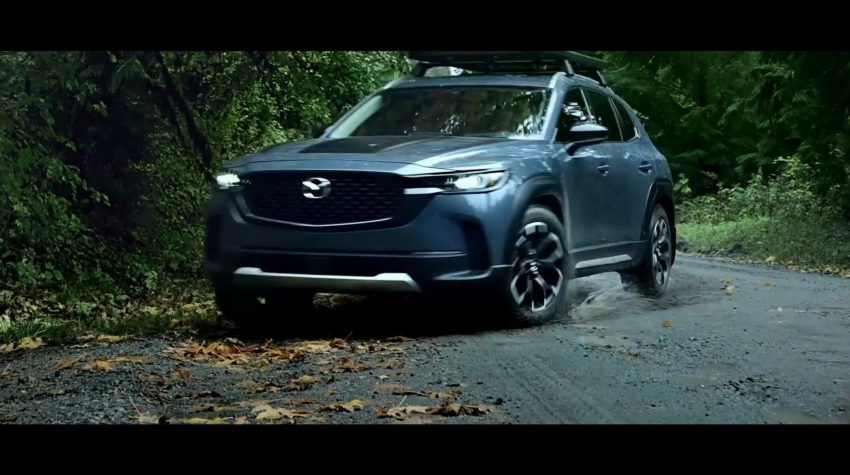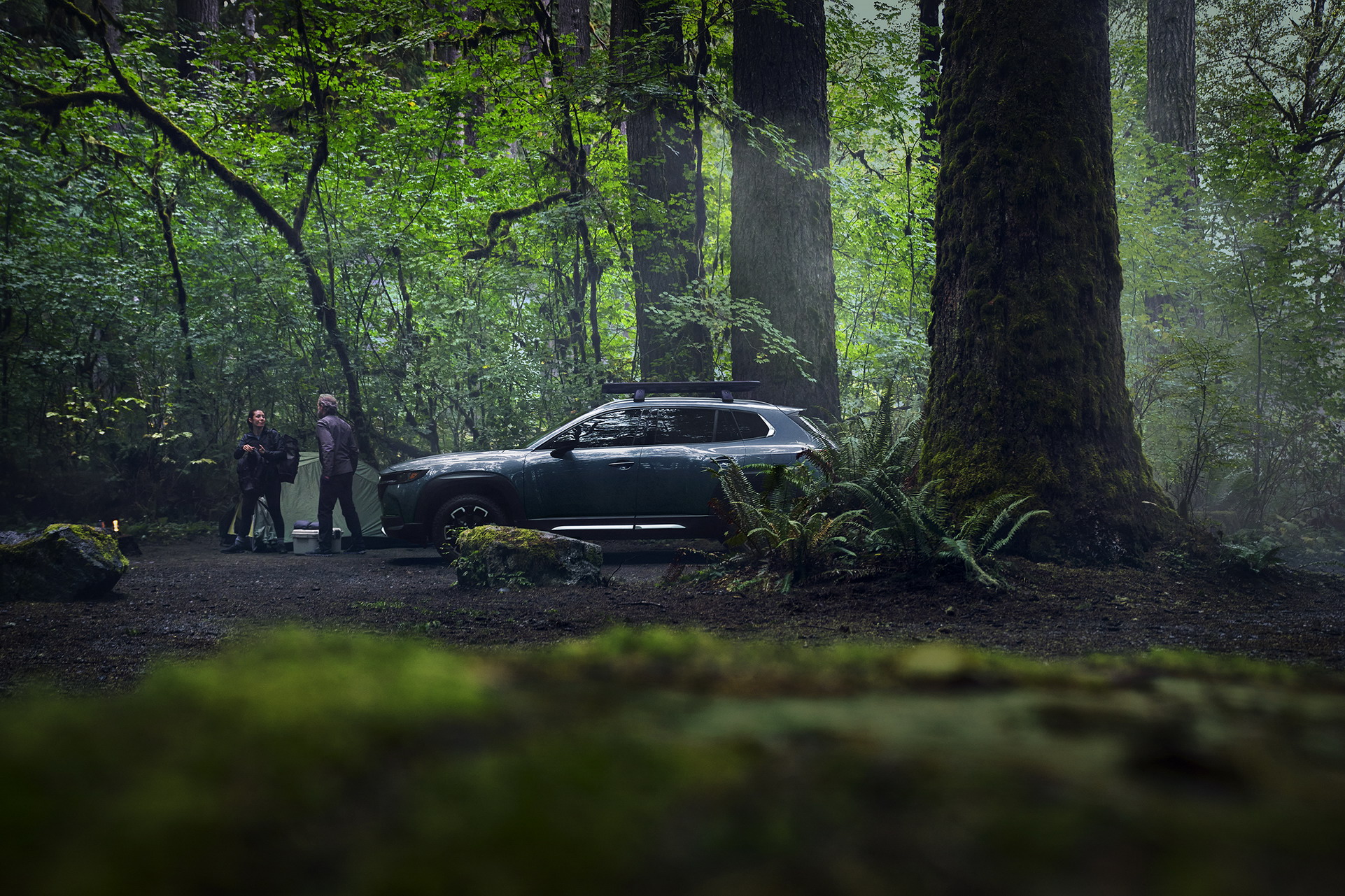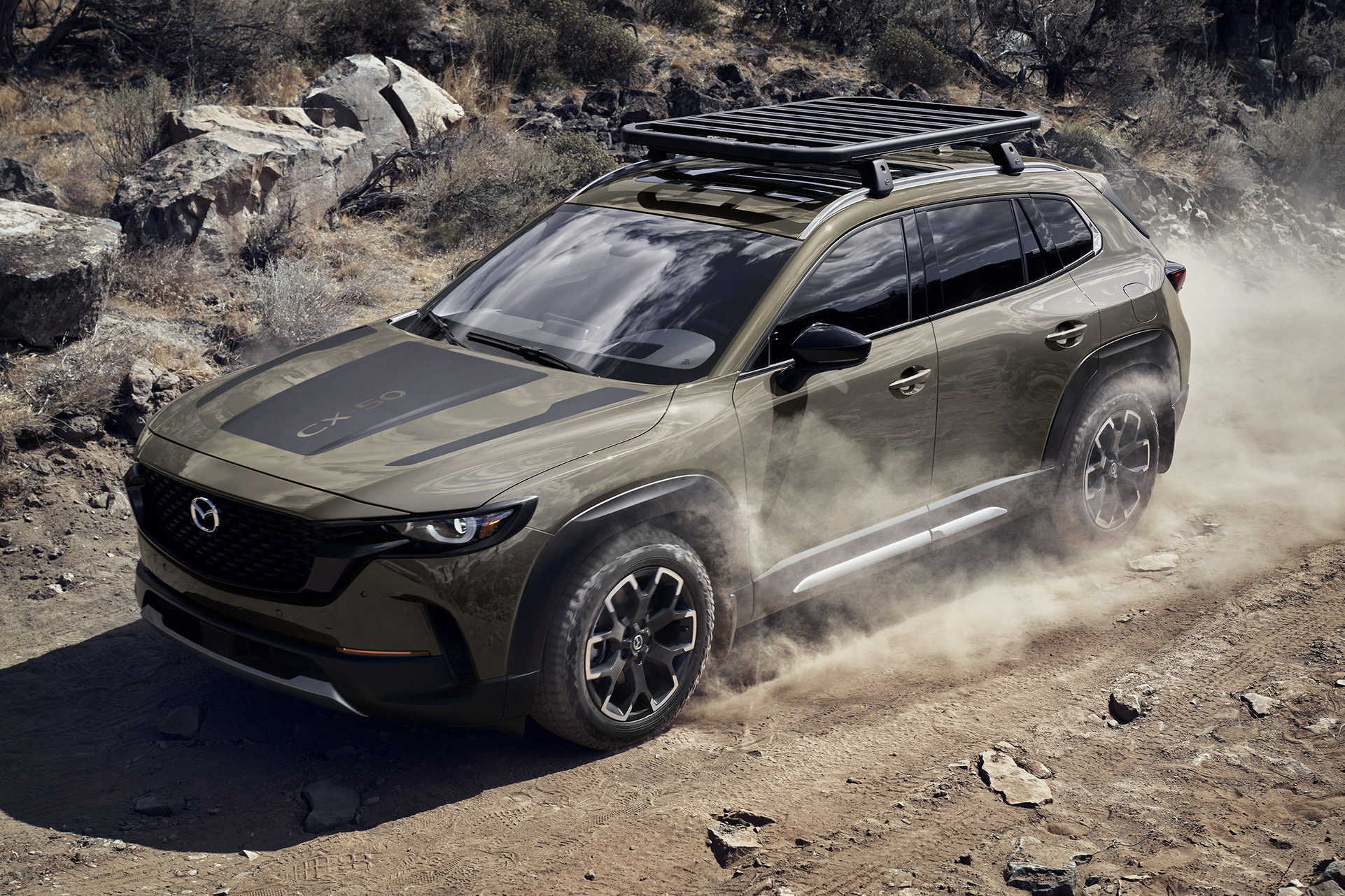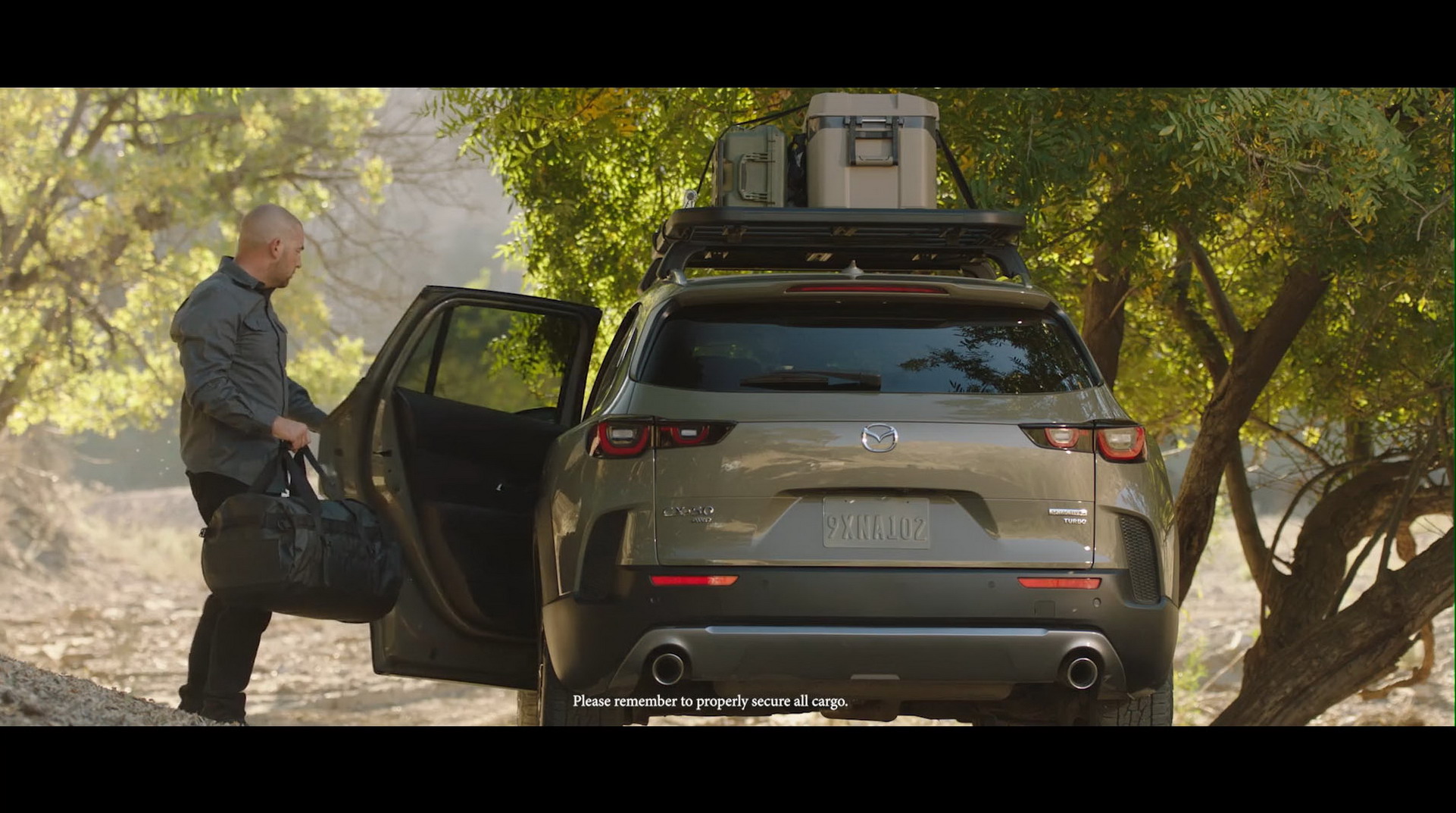
Mazda today took the wraps off of the brand new 2023 CX-50 that joins the brand’s expanding SUV range next to the similar-sized CX-5. The rugged-looking off-roader is the Japanese brand’s attempt at a rugged off-roader that doesn’t sacrifice too much on-road performance in the pursuit of capability.
Set to be built at Mazda and Toyota’s new joint plant in Huntsville, Alabama, with production starting in early 2022, the CX-50 will hit dealer showrooms next year.
Familar tech underneath the Hood
Much like the CX-5, the new CX-50 is powered by Mazda’s 2.5-liter four-cylinder engine. Although customers will initially only have the option of the turbocharged or naturally aspirated engine, Mazda promises that it will soon offer more hybrid choices.
Read Also: Mazda Confirms 5 New SUVs For 2022 And 2023, Including US-Only CX-50

In the CX-5, the naturally aspirated Skyactiv-G 2.5-liter engine produces 187 hp (139 kW / 190 PS) and 186 lb-ft (252 Nm) of torque. The turbocharged Skyactiv-G 2.5 Turbo produces 250 hp (186 kW / 254 PS) and 320 lb-ft (434 Nm) of torque.
Off-Roady, but not Too Off-Roady
According to Dave Coleman, Mazda’s North American manager of vehicle dynamics, the company didn’t want to get too deep in the weeds with the off-road technology when designing the new vehicle. His research shows that outdoor trips typically involve driving hundreds of miles on pavement and only 10-20 miles off-road.
“So compromising all of that on-road driving, just for a little bit of improvement off-road doesn’t make a whole lot of sense,” said Coleman. “Especially if you’re Mazda, with our expertise on-road. So we resolved to get the best off-road performance that we could without making any compromises in the on-road driving.”

Instead, the company is focused on using its road prowess and designing a car that feels as natural as possible no matter what surface it may be.
“Mi-Drive modes are designed to give the same driving dynamics in different situations where the conditions are so different that we have to have different tuning to accomplish the same thing,” he explains.
This means that the CX-50 has an off-road mode but not a surface mode. Unlike in other vehicles, the CX-50 doesn’t offer a sand, gravel, snow, or whatever mode because, although that sounds fun in a showroom, it ends up being confusing in the real world, where surfaces tend to be made up of more than one material.
AWD is a standard, but maybe not for the reason you believe

As befits a rugged SUV, Mazda is offering its i-Activ All-Wheel Drive technology and Intelligent Drive Select as standard on the CX-50, but it’s not always being used for its torque. For example, the towing mode changes the shift plan to take into account the additional weight of a trailer. It also loads the g-vectoring controller to offset the weight removed from the front wheels. It hopes that the SUV will steer better without trailers and have less wobbling. It also aims to improve the stability of the drive by using the AWD system, which is loaded with torque.
Off-road mode attempts to compensate for the low grip frontally by improving turn-in. In this situation, the AWD system is preloaded but it does not get extra torque. Rather, it’s to make the front and rear wheels turn at the same rate to make handling more predictable.

Made for Everything
For increased capability and ride height, the CX-50 gets reinforced B-pillars and high-strength roof bars to make it more stable. A new panoramic moonroof, meanwhile, will help stargazers see more, provided there’s no kayak obscuring their view.
Inside, too, the vehicle will be designed to accommodate all the gear you could possibly need for a weekend in the woods, although Mazda hasn’t revealed any dimensions.
To ensure that the driver still feels like the main focus of the interior, the cockpit has been designed to unfold symmetrically around the driver’s axis. According to the company, this creates an atmosphere of connection and engagement. The interior photos show plenty of premium leathers and materials, which should provide comfort for any user.

Made In America Alongside Toyota’s Corolla Cross
Although the CX-50 is built in the same Alabama plant as Toyota’s Corolla Cross, Mazda says that the vehicles coming out of its side of the factory are separate from those built on Toyota’s.
“Each vehicle’s platform and core components are unique,” a Mazda spokesperson told Carscoops. “Both Toyota and Mazda are responsible for sourcing and procurement of their own parts/components, but some materials are shared to make the most of the joint venture.”
Expect pricing and more details to be unveiled closer to the CX-50’s market introduction, later next year.
Adblock Test (Why?)